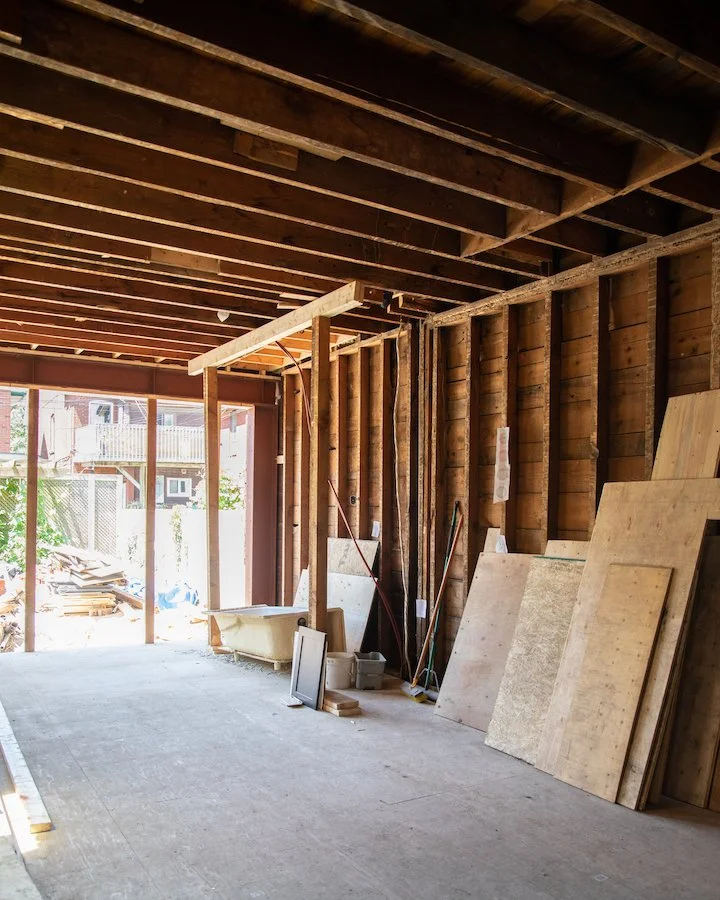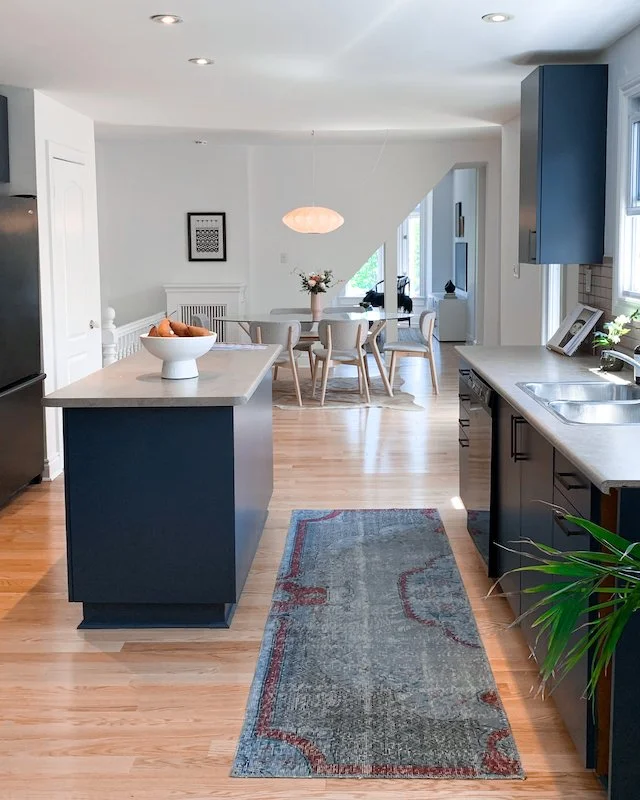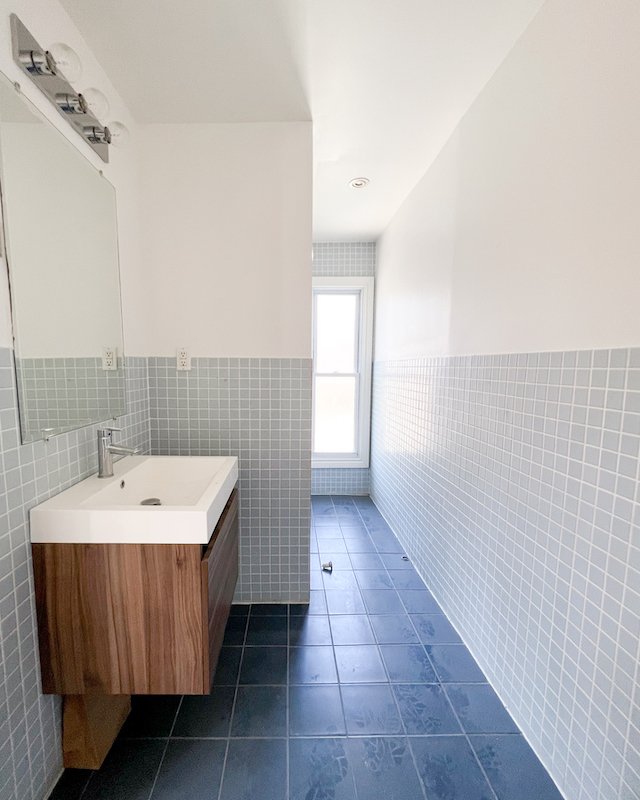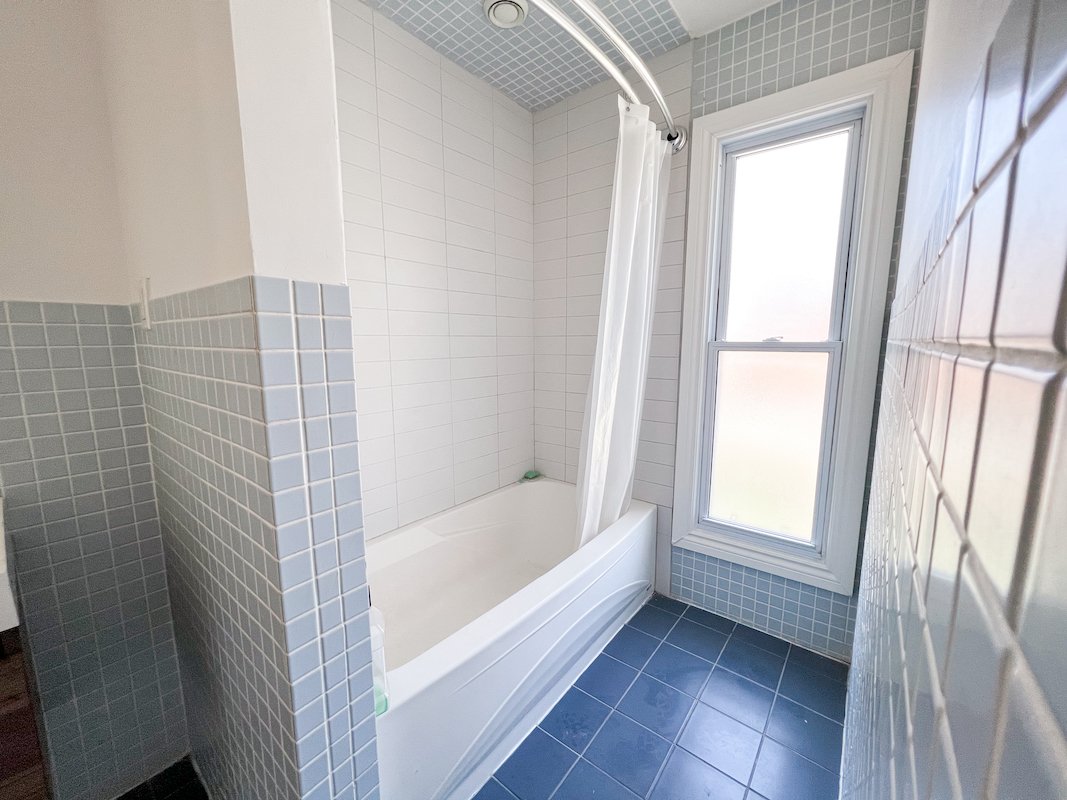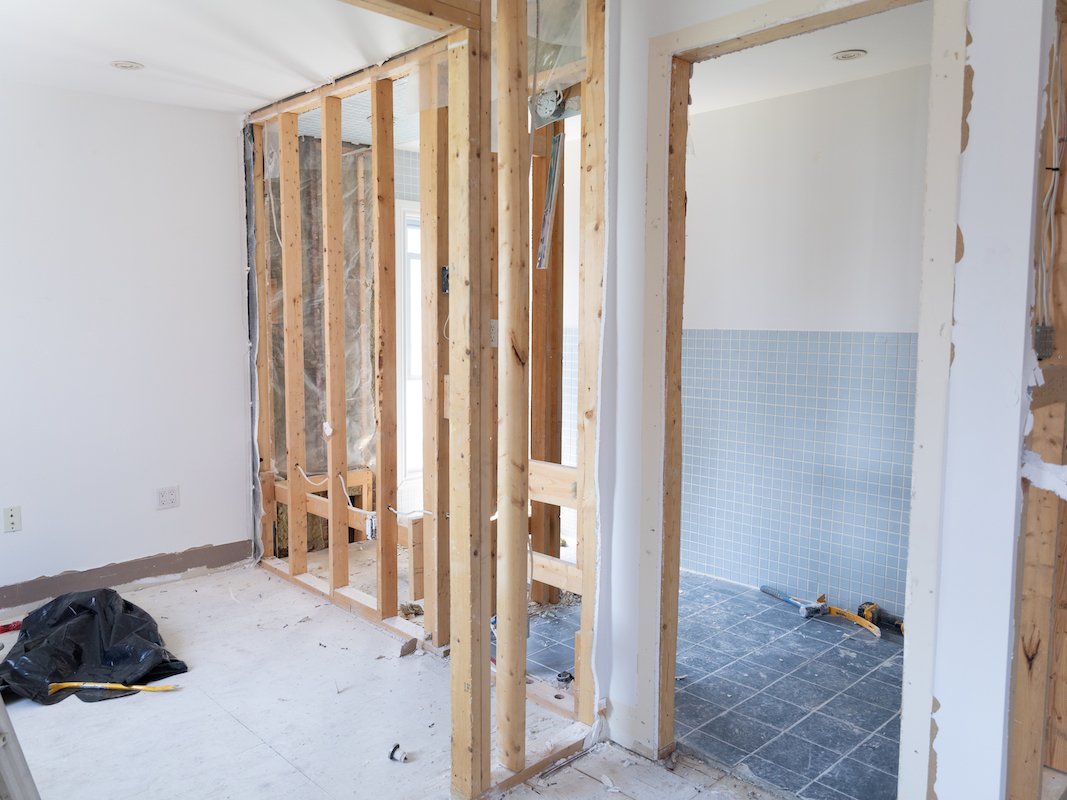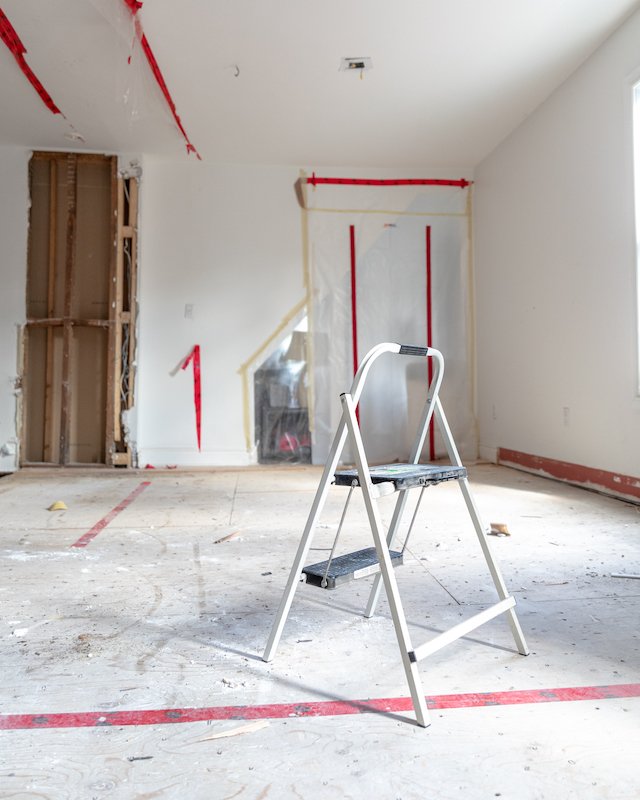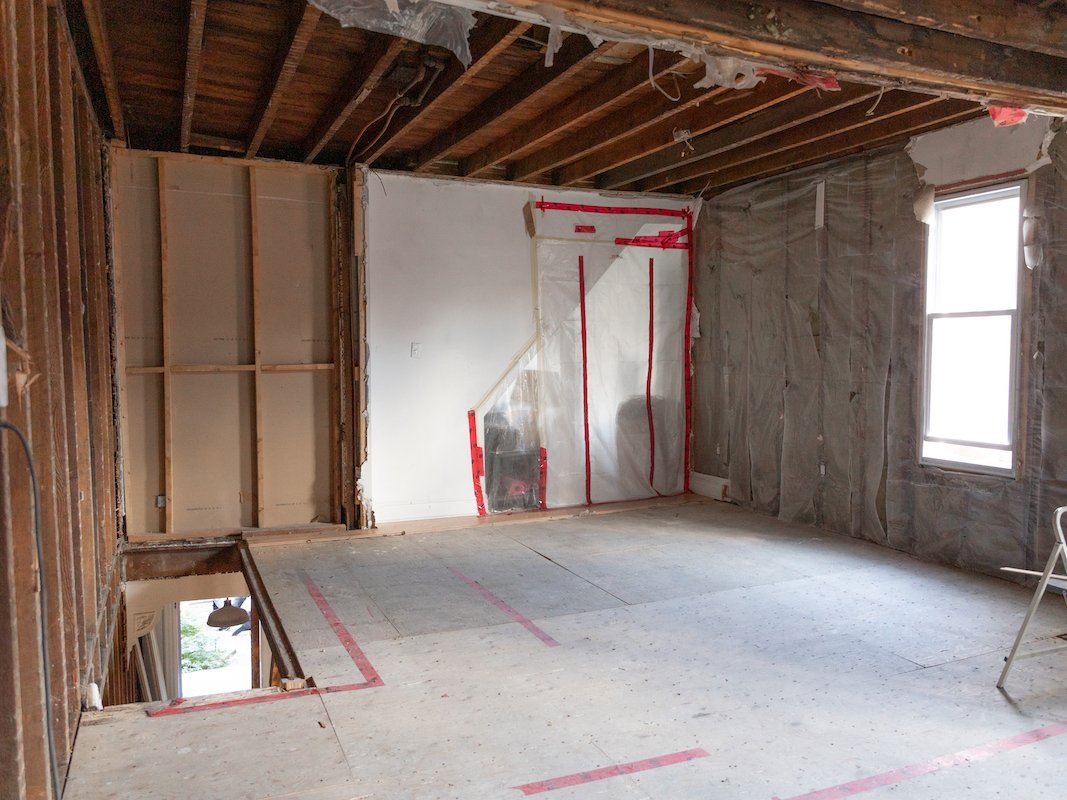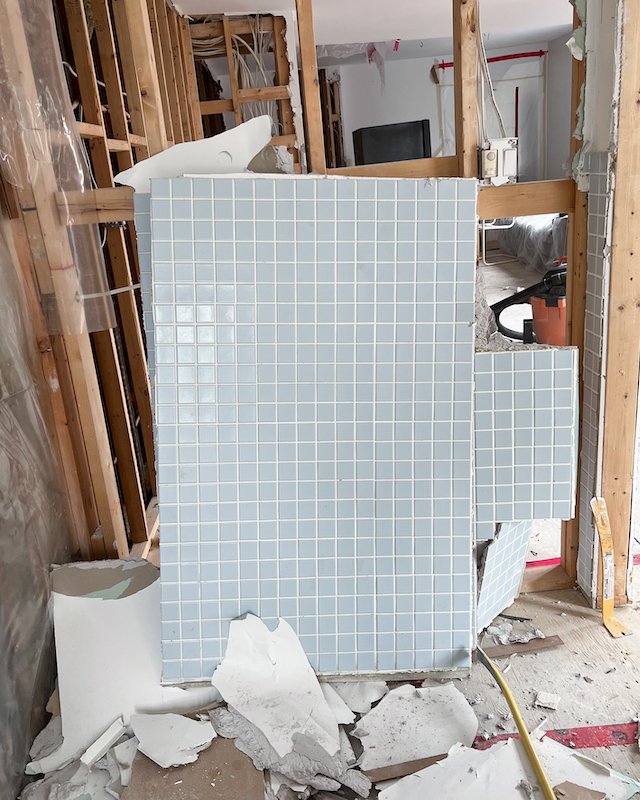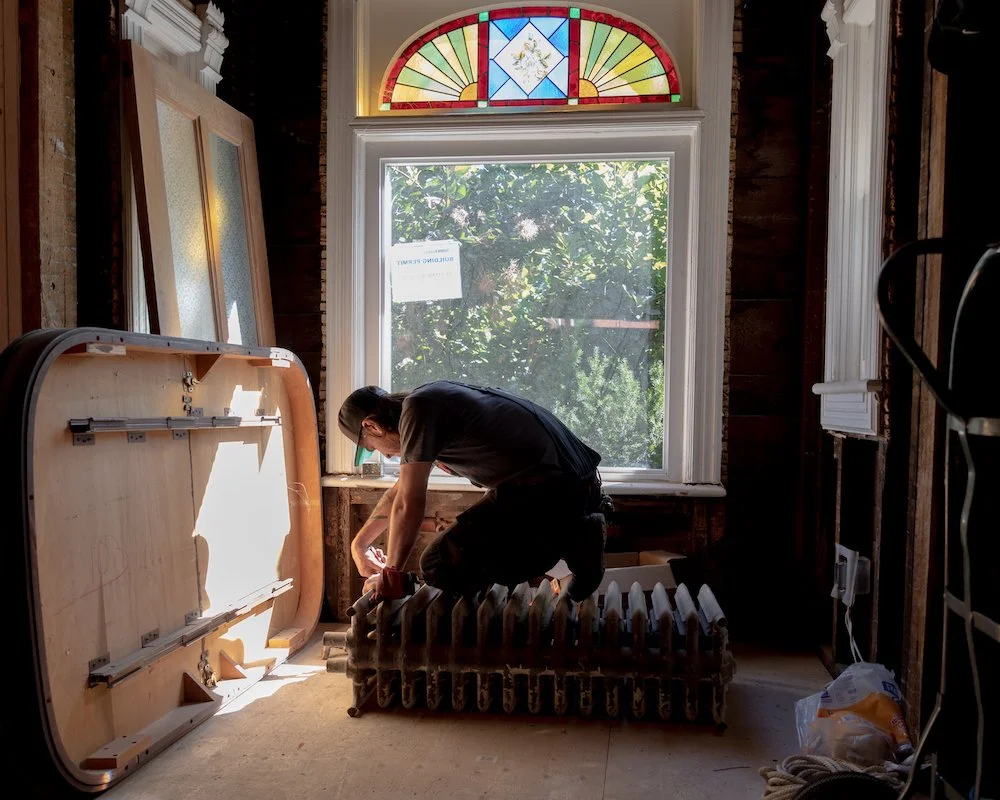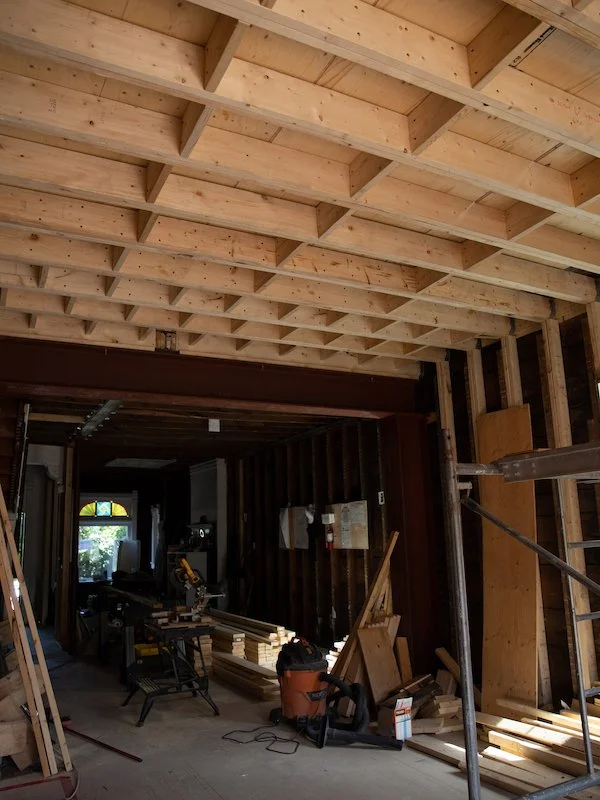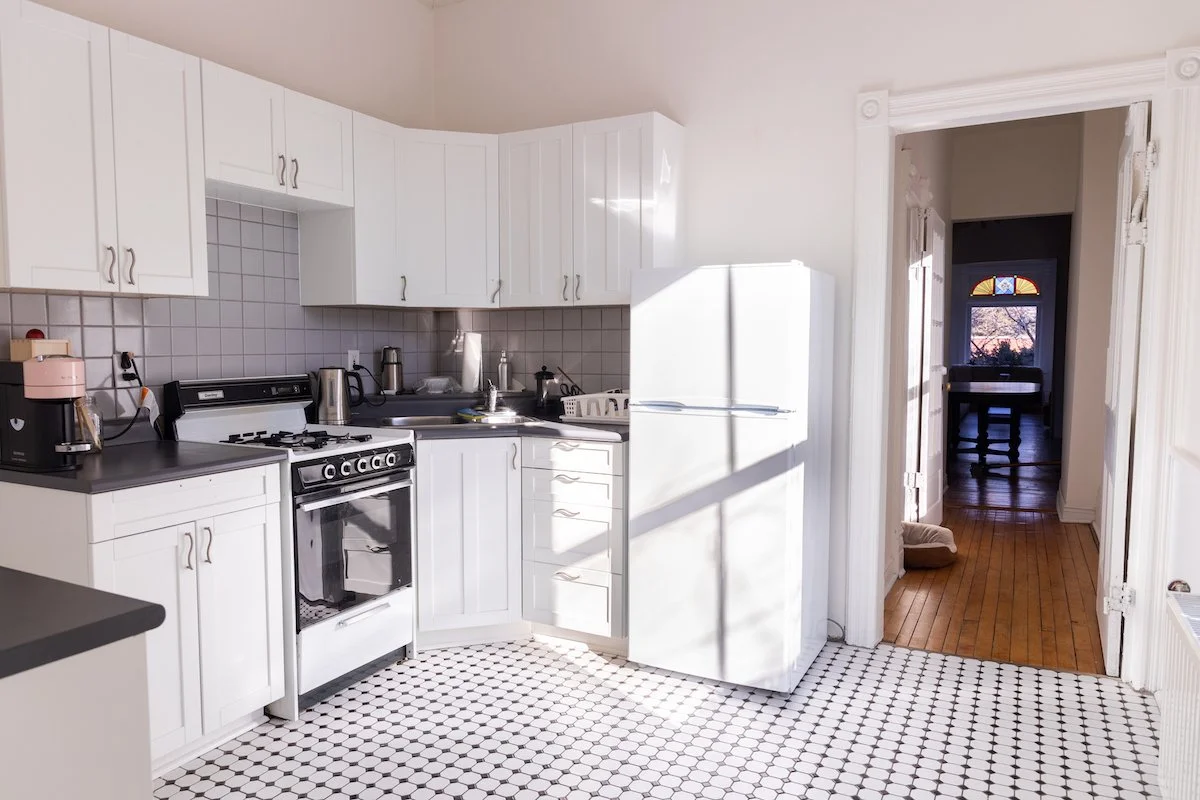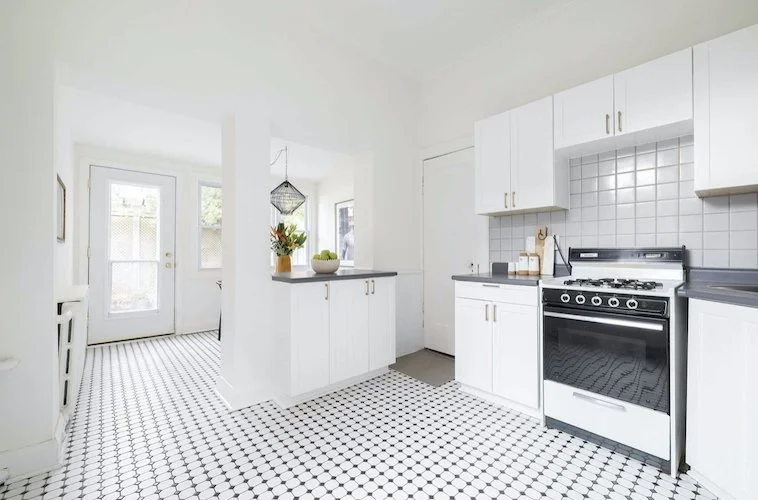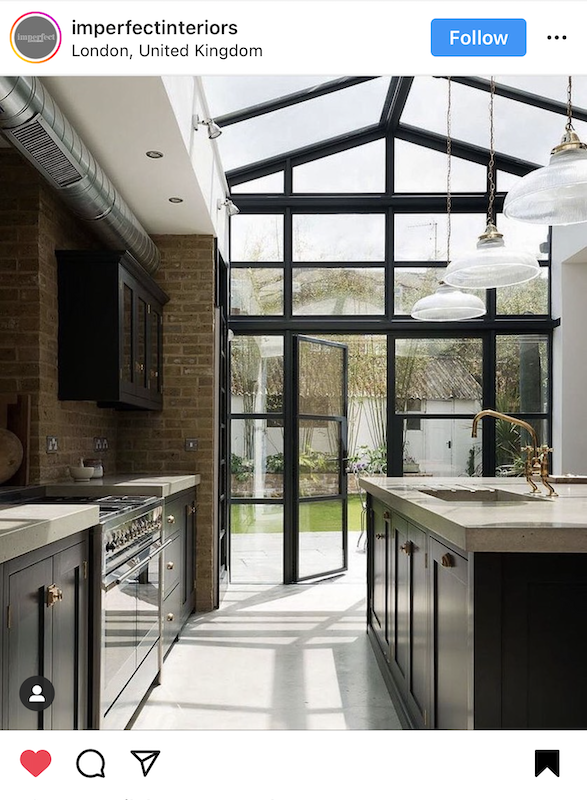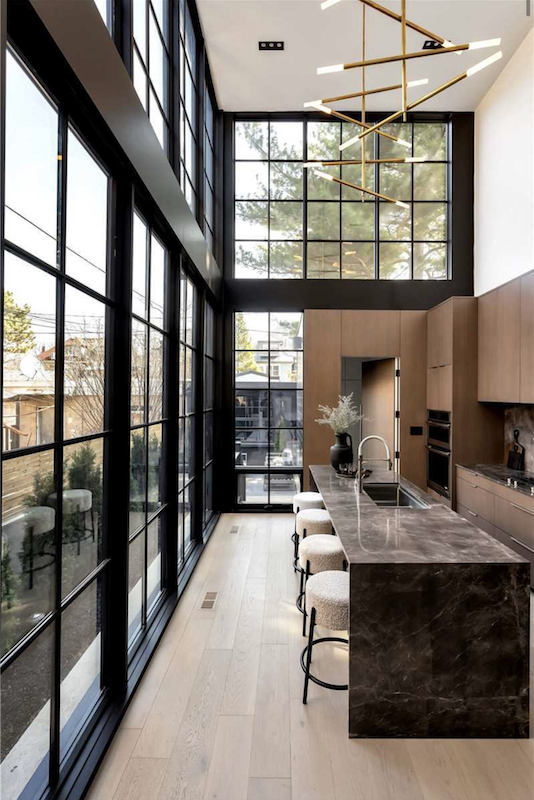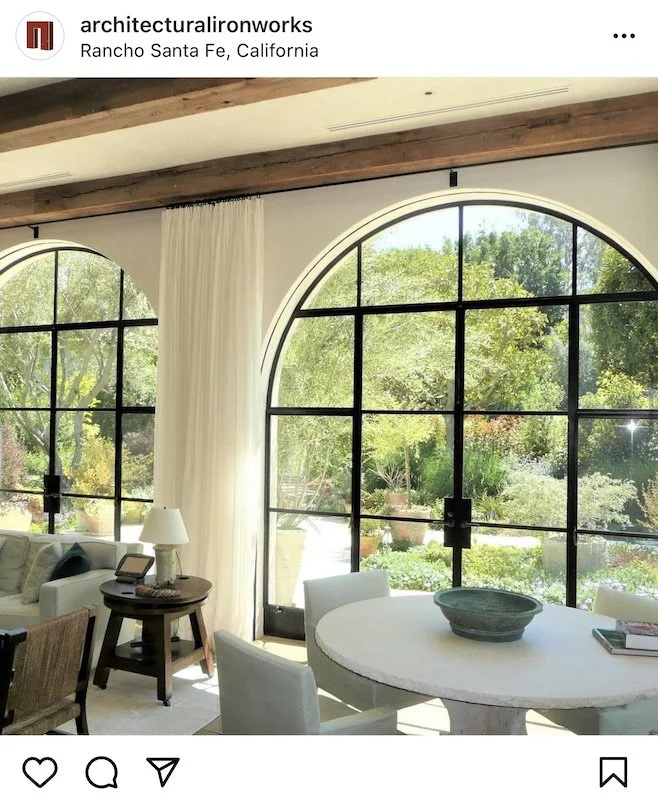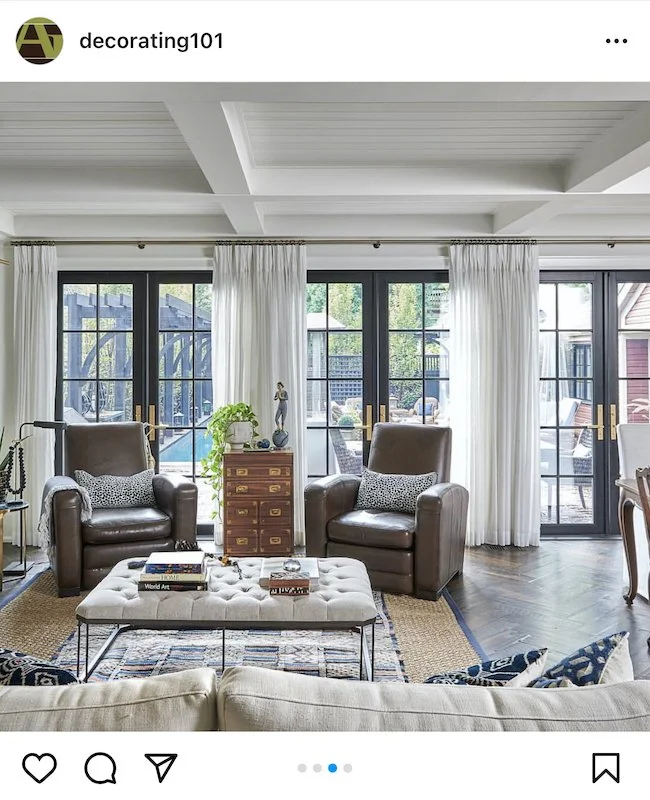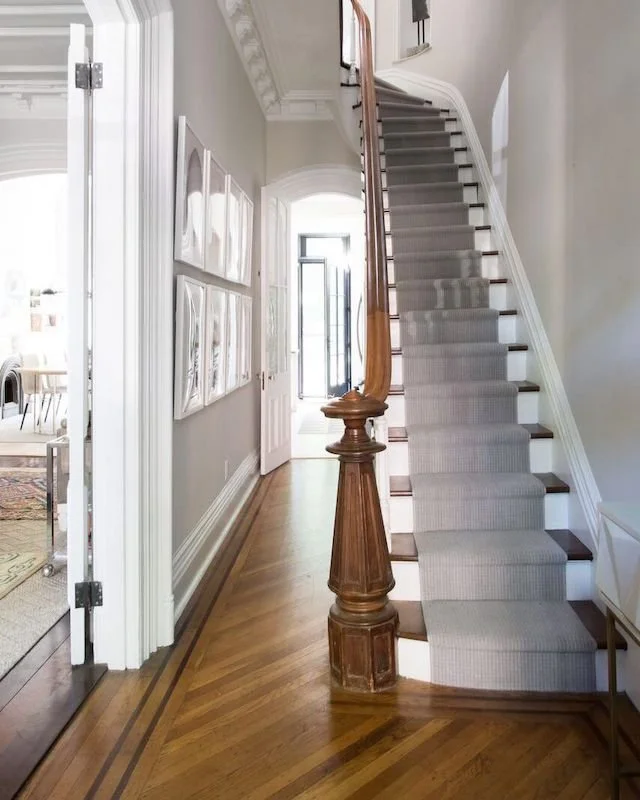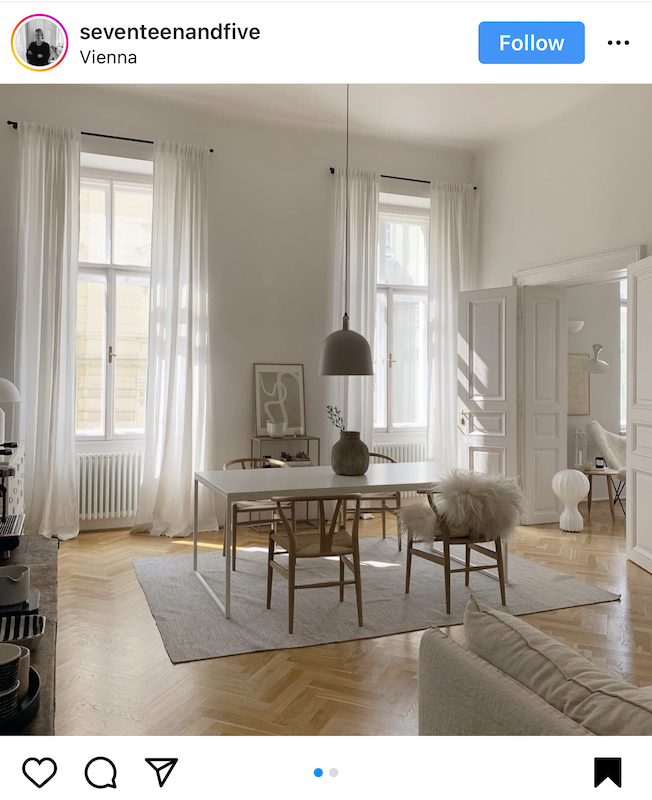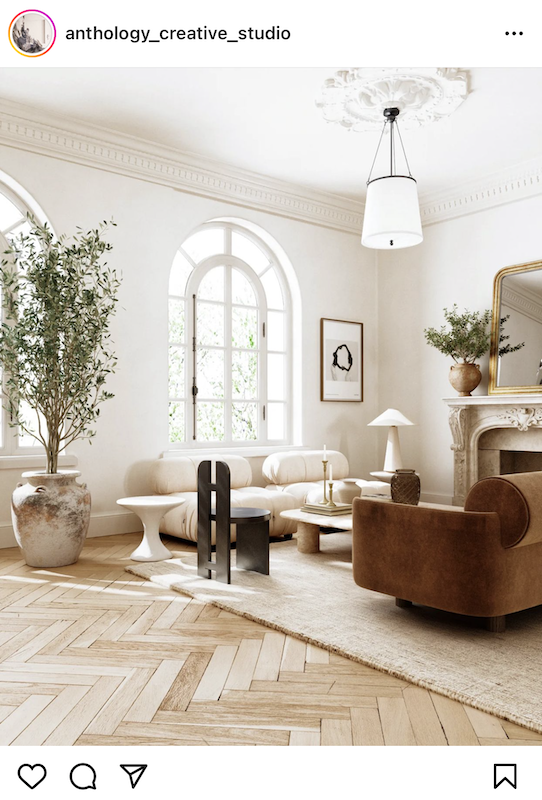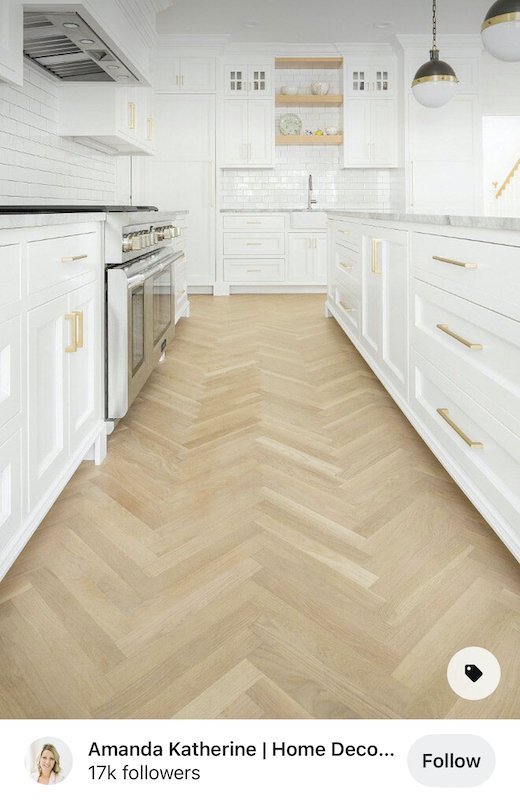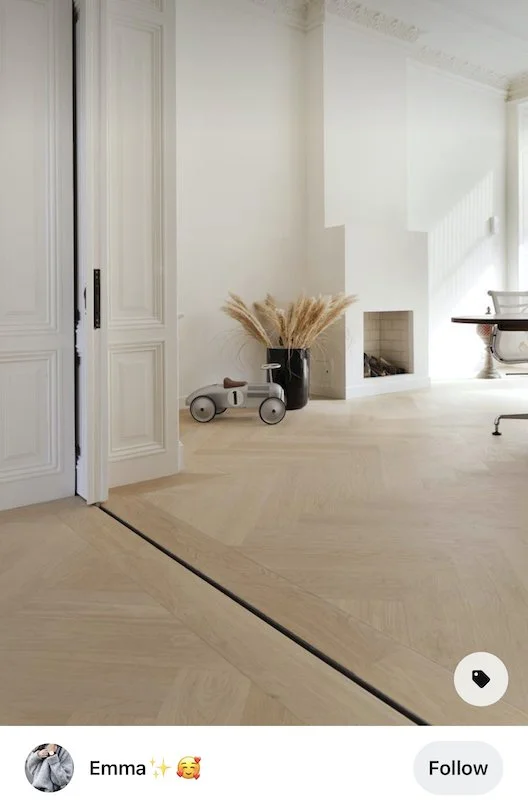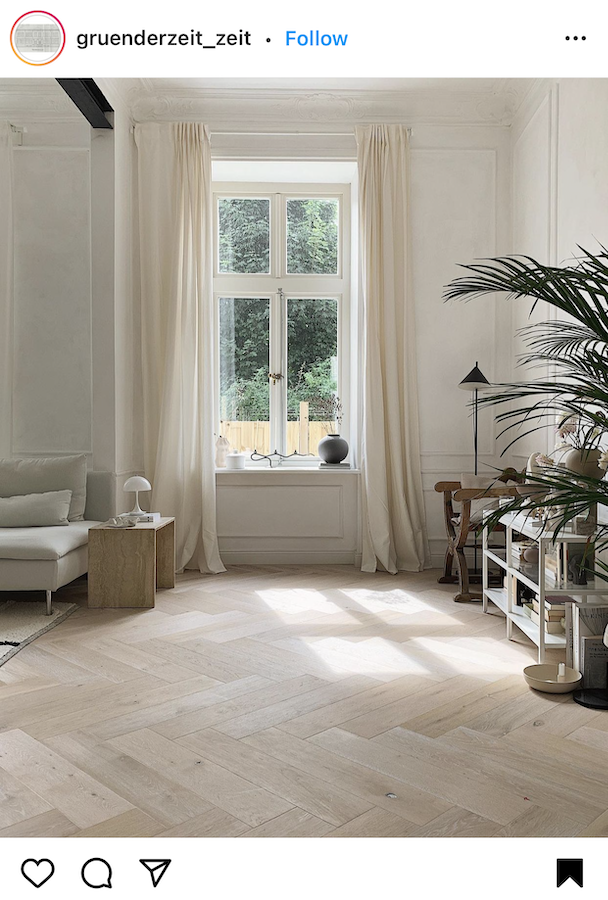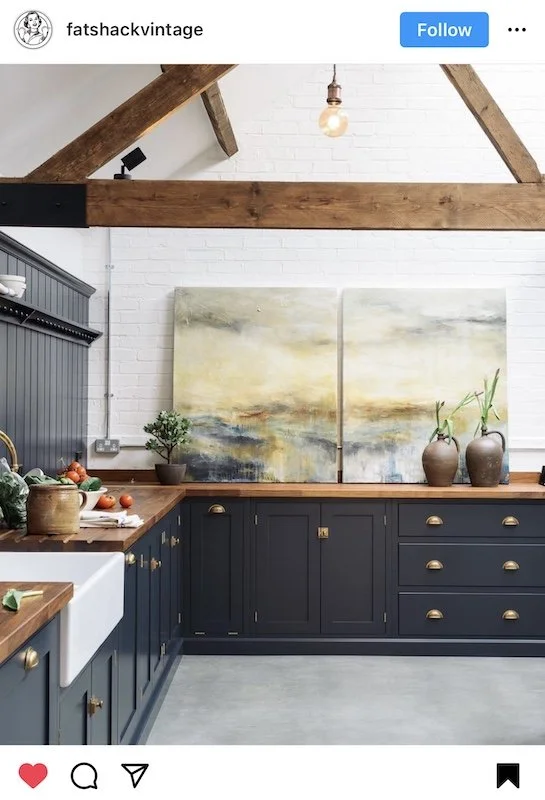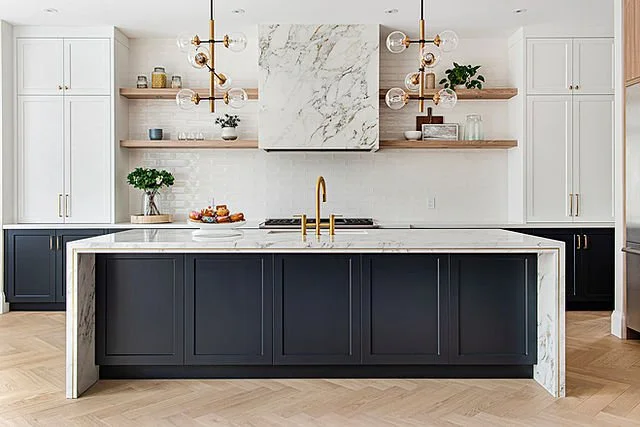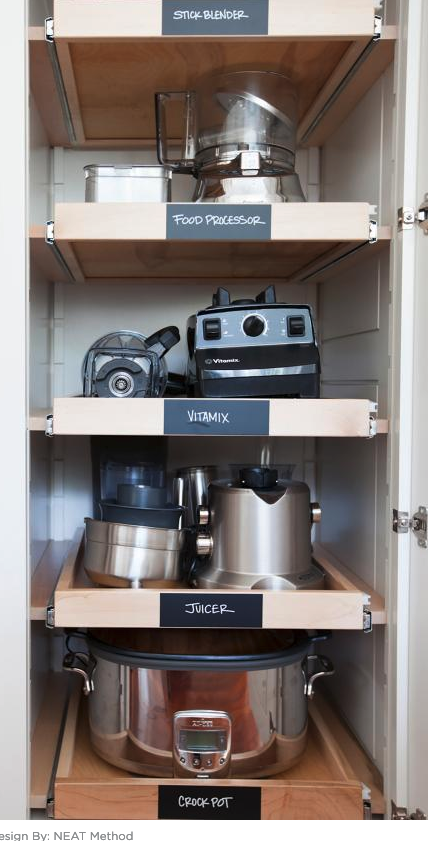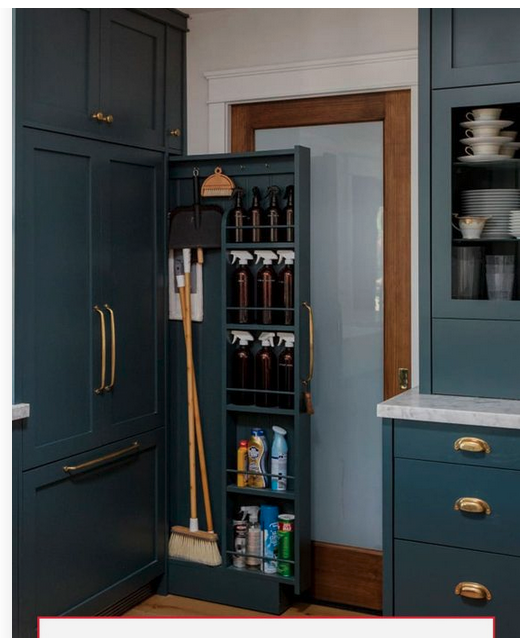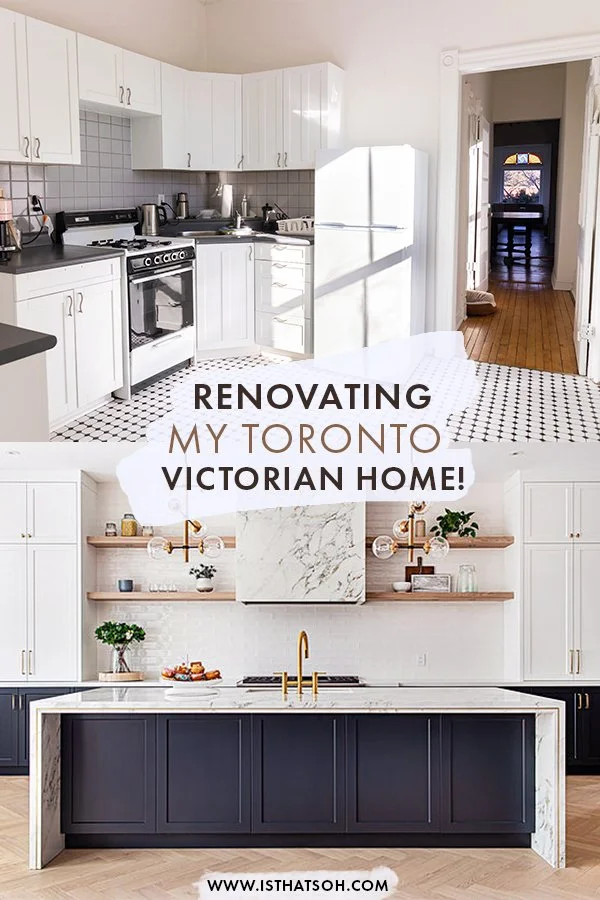RENOVATING MY TORONTO VICTORIAN HOME - EPISODE 3!
When Adam and I first started talking about renovating our Toronto Victorian home, we knew we had to split it up into two phases. Phase 1 would focus on fixing the structural issues and redoing the entire main floor, while Phase 2 would focus on re-configuring the layout of the second floor and enlarging the third floor by replacing the back half of the roof with a new dormer.
What we didn’t anticipate, was how bad the condition of the main floor ceiling joists were in the back half of the house. Half didn’t span the entire width of the room, big chunks were cut out of them, and many were being held together by other, smaller, pieces of wood. We were Shoooketh!
Many of the ceiling joist on the main floor did not span the full width of the house!
FOLLOW ME ON INSTAGRAM @ISTHATSOH
Originally, we thought all we would have to do was sister each ceiling joist (to sister a joist you add an extra identical joist to the existing over-spanned, damaged or inadequate joist, and tie the two together with glue and screws (or nails) to add structural support – sounds super easy, right!?), but after the demo was completed and structural work commenced, it became obvious that there was way more work to do! For one thing, 80% of the ceiling joists needed to be replaced. In order to do that, we would need to demo whatever was above. And yes, I’m talking about the second floor!
We had not anticipated needing to renovate the 2nd floor kitchen (above) or the 2nd floor bathroom (below)
At that time, that area of the second floor was occupied by our second floor kitchen, my little back office, and a small bathroom with a stand-up tub shower. If I’m being honest, I didn’t love the quality of the cabinetry and the ‘master bath’ left much to be desired, but we were willing to wait. True, we had no real bedrooms but we had our master and two small twin rooms on the third floor that were being used as his and her closets. The house definitely needed more bedrooms and a bathroom worthy enough to be considered a master, but still, we had a plan, two phases.
p.s. I had not taken any photos of the second floor prior to the demo, so this was all I could find. The kitchen photo is from our viewing, prior to buying the house!
I guess this is the part where I should tell you that we not only did we end up pulling the second floor into the first phase of our Toronto home renovation but we decided to do it ourselves! In episode 3 of my home renovation series I share the last two months of sweat equity Adam, his dad, and myself poured into fixing our Toronto Victorian home. In this episode, we tackle the demolition of the second floor, how we replaced each ceiling joist one by one, us installing a new levelled subfloor as well as everything that happened behind the scenes! The crucial question is, will our work pass inspection? Find out in Episode 3: Sweat Equity! Haha!
PHOTO’S FROM OUR SECOND FLOOR DEMO!
While Adam and I were busy working on the house, a few things did happen behind the scene. For one, our appliances finally showed up along with our new natural oak herringbone floors from Chestnut Flooring.
If anyone is in the market for flooring, I highly recommend visiting Chestnut Flooring’s showroom in Vaughan. They are a family-owned, full service (that’s right, they don’t just sell you the flooring, they will help you install it too!), one stop shop for all your flooring needs. They offer a wide range of flooring products including hardwood, engineered, laminate, carpet, vinyl and even tile from both well-known domestic and international brands.
When Adam and I first began to look for herringbone floors we visited numerous showrooms but none stood up to the quality and variety that Chestnut Flooring provided. Their engineered herringbone flooring was superior in both top layer thickness and durability which meant down the road, if we ever wanted to re-sand and re-finish the floors we could do it without issue. Of course they also offer solid hardwood floors however, given our Canadian climate, engineered hardwood flooring is better suited for herringbone oak floors. Since the core of engineered hardwood consists of 5 to 7 layers of plywood pressed together in a crisscrossed pattern, it is its construction that makes engineered hardwood flooring less likely to shift, expand or contract when exposed to environmental changes in temperature, moisture and humidity (and when it comes to specialty floors like herringbone and chevron you don’t want movement). Further, our installer who had worked with numerous types of flooring from numerous flooring companies in Toronto, independently suggested we visit their showroom and commented on how he preferred the quality of Chestnut’s flooring products over others he has worked with. So really, that sealed the deal for us! Of course, now that we are redoing the second floor we will be revisiting the Chestnut Flooring showroom to order additional flooring. Stay tuned for our selection!
OUR TORONTO HOME RENOVATIONS - BTS PHOTOS OF US REPLACING JOISTS BETWEEN THE MAIN AND SECOND FLOOR.
Additionally, Adam and I also pulled the trigger on getting two of our column radiators refurbished! Prior to the demo of the main floor, we discovered a beautiful ornate Victorian radiator in the main floor bedroom. It had been hidden behind a clunky rad cover, had not been maintained and desperately needed to be refurbished, but it was beautiful and I was ecstatic about its discovery!
Of course, since we were doing such a big renovation, the possibility of switching from cast iron radiators to forced air was an option but after learning more about the pros and cons of other types of central heating systems (particularly a forced air system) – like how they can collect dust and cause allergies, how the duct systems require regular cleaning, and that the furnace system serviced – central heating radiators just seemed like less yearly maintenance. Further, cast iron radiators are spectacular in moist climates such as Canada where we get tons of snow in the winter and rain in the spring. They are known for keeping basements bone dry during these months not to mention don’t require additional bulkheads like a forced air system. Lastly, they can be a beautiful showpiece (like a piece of jewellery for your home!) when refurbished and considering I am trying so hard to keep the charm of my Toronto Victorian home intact, it was an obvious choice.
In order to pass Toronto building code we would have to meet a certain BTU output, so enlisting the help of a heating experts at Ironworks Radiators Inc felt like the ideal next step.
CAST IRON RADIATOR REFERBISHMENT & REPAIR
Based in Toronto, Ironworks Radiator Inc. offers a multitude of services including consultation, radiator resizing, refurbishment (which includes custom repainting), is a supplier of radiator parts and accessories (including super fancy radiator bleeder keys), and offers pickup and delivery services. They also have a huge stockyard of rare vintage radiators to choose from and are licensed distributor for various new steel and cast iron radiator from international industry leading brands like Castrad.
Discovering Ironworks has been immensely beneficial for us. Not only were we interested in getting two column radiators refurbished, but we were in the market for an additional vintage radiators and two new custom modern radiators for under the twin windows in the kitchen. Jennifer at Ironworks was an invaluable help, organizing the pickup of our cast iron radiators for refurbishment (a rare service that many moving companies including piano moving companies won’t attempt because of how heavy they are!) and recommending new and vintage cast iron radiators to meet our BTU requirement, aesthetic and new main floor layout. She didn’t just recommend product though, she also provided a personalized consultation explaining the best course of action for the main floor given what we currently had to work with in other areas of the house. She really took the time to explain things to me as well, which I very much appreciated because I had a lot of questions! Central heating was a whole new world to me and I was on a mission to drill down and get all of the details. Our consultation of course ended with an invitation to come check out her stockyard. Inventory changes frequently in the Ironworks stockyard so who knows what rare Victorian radiator I will find when I go! I can tell you one thing for certain though, this is one treasure hunt I could not be more excited for! Stay tuned for more on this in the next episode!
If you don’t want to wait for the next episode to catch a glimpse of what is happening behind the scenes you can always follow me on Instagram where I share up-todate stories of my interior design and renovation progress!
CHECK OUT THESE OTHER HOME & LIFESTYLE BLOG POSTS
PHOTOS AFTER SISTERING AND REPLACING THE CEILING JOISTS IN OUR TORONTO VICTORIAN HOUSE
Thank you so much for joining me today and for checking out my new Toronto home renovation series on Youtube. I am super excited to be modernizing a Victorian home while still keeping the charm of an old Victorian house. If you have any questions about my Victorian house renovations, what it’s like to live in Little Portugal, Toronto or recommendations for Toronto contractors, hit me up in the comments below!
Before I sign off, I’d also like to say a big thank you to Chestnut Flooring and Ironworks Radiator Inc for partnering with us on this project. I’m so excited to be working with local industry experts on our Toronto home renovations but want to reiterate that, like always, all opinions remain my own.
Until next time,
- Soheila


